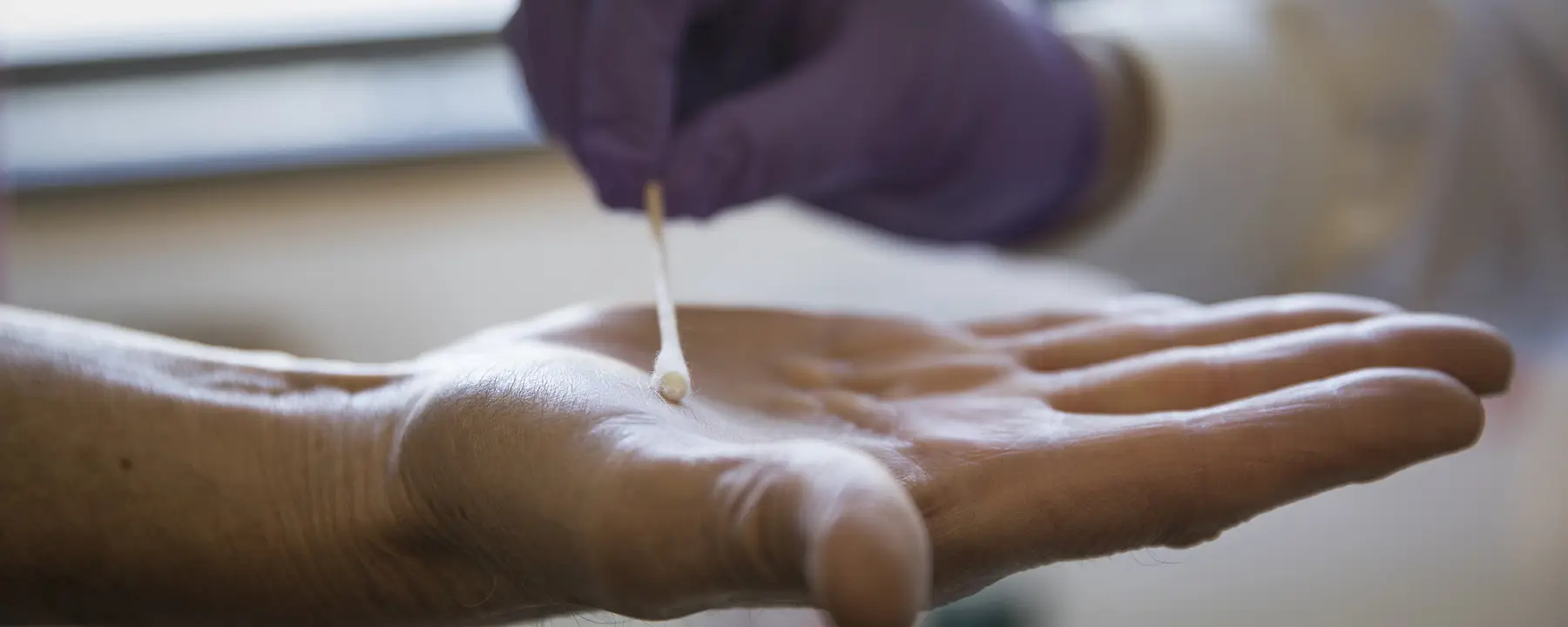Developing a new technique to aid crime scene investigators
Every time an individual fires a gun, two kinds of residue are created: organic and inorganic. Inorganic residues, like the elements barium and antimony, derive from the metallic components of the firearm (the bullet and the casing), as well as from the primer, which is the mix of chemicals that detonates the propellant. Organic residues, like the complex hydrocarbons nitroglycerin and diphenylamine, are created by the propellant, which literally explodes to force the bullet out of the firearm’s barrel.
Historically, when investigating suspects in shooting cases, police rely on inorganic gunshot residue (GSR), which can be recovered from skin tissue or clothing using forensic techniques. The trouble is that GSR analysis is a relatively blunt instrument when it comes to gunshot forensics; these residues dissipate within one or two days and only provide a limited amount of information about the type of gun used in the crime.
Seeking to expand the capabilities of GSR testing, RTI International self-financed a preliminary study of organic GSR, the reliable detection of which has the potential to radically change forensic science. Specifically, we focused on 10 common organic residues, ranging from nitroglycerin and diphenylamine to less-familiar chemicals like ethyl centralite and dibutyl phthalate. Because this was a proof-of-concept study, we didn’t know in advance which of these chemicals would best lend themselves to forensic analysis, or at what concentrations.
Enlisting the Help of the Durham Police Department
In the late summer of 2017, our researchers visited the Durham Police Department firing range and collected organic GSR samples (via cotton swabs applied to the palms of the hands before and after shooting) from 16 officers who had fired five to 10 shots and from two volunteers who had fired no shots, but did hold one of the guns recently fired by an officer. (The officers brought their own firearms and ammunition; we had no input into the equipment used.) We also collected GSR samples from seven officers who had fired shots using the standard adhesive stub technique.
Of the 10 organic GSR compounds recovered from the officers’ hands, five proved especially amenable to analysis in the lab: nitroglycerin, N-nitrosodiphenylamine, 4-nitrodiphenylamine, diphenylamine, and ethyl centralite. (Note: we found high background levels of diphenalymine on subjects’ hands before any shots were fired, but these levels were noticeably increased afterward.) We could detect no trace of organic GSR components on the hands of officers who had fired a weapon one week before, providing a tentative upper bound on the time constraints involved in testing for organic residues.
Our study also yielded two unexpected findings that may be attributable to the small size of our initial sample:
- The concentrations of organic GSR components recovered from shooters firing similar numbers of shots, and using the same ammunition, were highly variable.
- Organic GSR components were often found on only one hand; however, this was not correlated to the handedness of the person firing the weapon.
Expanding the Forensic Toolkit of Crime Scene Investigators
Why is the reliable detection of organic GSR such a potential game changer? While most firearms produce similar GSR profiles, organic GSR varies significantly across different types of ammunition (which incorporate different kinds of propellants). If this technique is determined to be effective, crime scene investigators will have a third forensic tool at their disposal, in addition to ballistics (the analysis of firing characteristics, bullet trajectories, and points of impact) and GSR analysis.
Our next step will be a larger, controlled study in which we specify the number of shots fired and provide participants with various types of ammunition. We also must answer some important questions:
- What effect does hand-washing have on organic GSR detection?
- Can organic GSR distinguish an actual shooter from someone who has merely handled a recently fired gun?
- Within what window of time should organic GSR samples be collected before they degrade?
We are hopeful that these analytical techniques will generate valuable new information and eventually make it possible to add organic GSR to the forensic arsenals of police departments nationwide.
- RTI-funded




